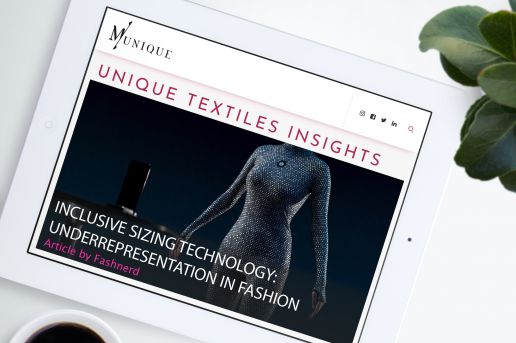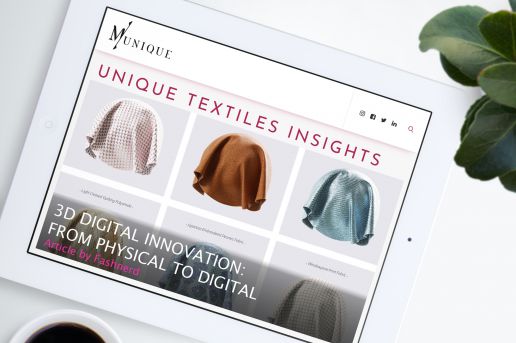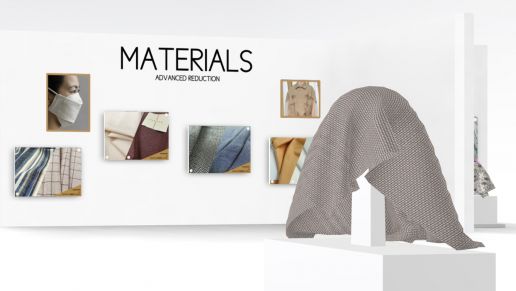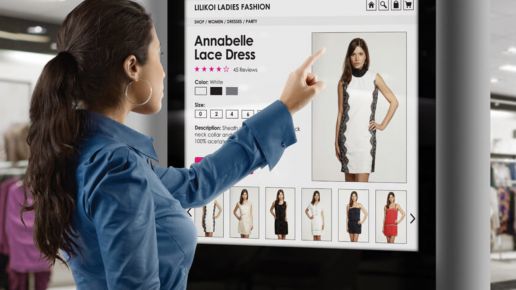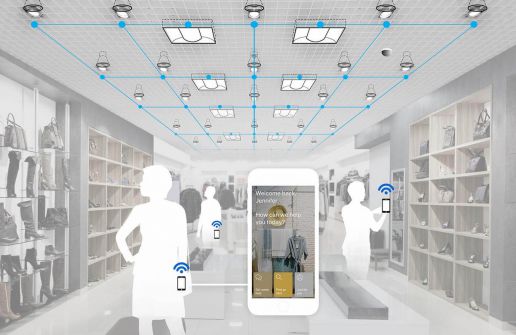Digital Fashion Design
Inclusive Sizing Technology
Inclusive Sizing Technology, Helping the Fashion Industry Represent the Underserved
AN INDUSTRY INSIGHT BY FASHNERD FOUNDER MUCHANETA KAPFUNDE.
With as many unique sizes as there are people on the planet, does it make good business sense for the fashion industry to continue to mass-produce 3 or 4 standard sizes? Yes, it is cost-saving, but with the new wave of body positivity breaking the sizing mould of yesteryear, maybe the time has come to move with the times. It is a positive thing to see the movement forcing fashion brands and retailers to turn to technology to meet most body shape needs and offer more than just standard basic styles.
Sizing Technologies, Worth the Investment?
Inclusive sizing technology is nothing new. Several solutions have been trying to correct the distorted and outdated image-standard designed to exclude plus-size consumers for a while now. Most famously was the ZOZOSUIT, a skin-hugging, high-tech bodysuit created to help shoppers purchase clothes, guaranteed the perfect fit every time. Now fast forward to 2021, and although sizing technology has advanced even further, shoppers are still struggling with common-fit issues. This begs the question, can fit technology fix fashions biggest demons, sizing and fit?
According to Narvar Inc, size and fit are among the top reasons customers return online orders. The e-commerce software company believes that this obstacle “further erodes retailers’ already thin profit margins”. Although it is a complicated problem, sizing technologies that offer a solution are being communicated to fashion businesses. One of those is 3D technology.
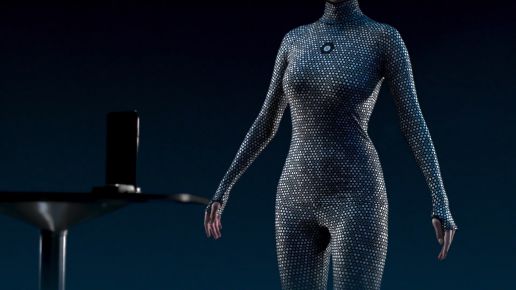
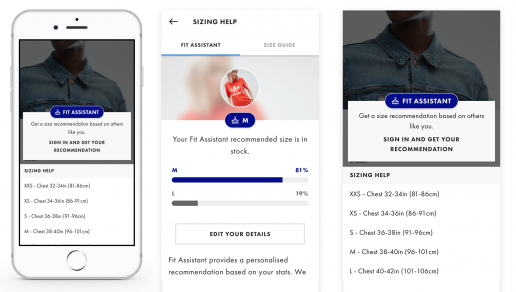
Revolutionising the fashion industry one label at a time, 3D technology is capable of helping fashion brands understand their consumer’s body shape so they can develop more accurate garments. One of those startups offering this type of innovation is CLO. On a mission to help the industry understand how ‘fit can build loyalty to a brand’, CLO 3D Simulation software feature allows brands to solve the question mark of their customer’s shape. Primarily built for cut-and-sew garments, CLO brags features like an API that enables customers to input their measurements to receive fit maps and view draped garments.
Fit Analytics is another solution. It is a technology that provides a “Fit Score” generated by response comparisons. CEO of Fit Analytics Sebastian Schulze believes that fashion brands cannot simply scale existing apparel specifications to create plus-size garments; they need fit technology to help them empower consumers and fix a decades-old problem.

Also worthy of mention is the digital fit solution app MySizeID. The direct to retailer technology helps consumers assess a garment’s sizing. Denim brand Boyish Jeans partnered up with MySize and saw a reduction of more than 30 per cent in two months. How? Well, the app’s AI-driven technology works by analysing user-entered data, like weight, gender or height, and then MySize’s proprietary machine learning database calculates the appropriate size. On their technology, Ronen Luzon, MySize CEO and founder told Sourcing Journal:
“Our app was designed specifically to take the guesswork out of sizing and make things as convenient as possible for online shoppers, so enabling customers to utilise our sizing recommendations and navigate directly from our app to retailers’ sites is a natural step for us when it comes to working directly with the consumer”.
Looking ahead, MySize is hoping to offer the same solution it does to the apparel industry to the footwear industry.
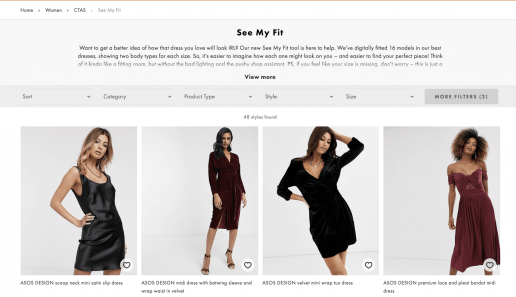
Yes, Fit Technology Has Gone Mainstream
When Lizzo, Ashley Graham and Meghan Trainor brought the inclusive sizing movement to the mainstream, fashion brands began to understand that they were walking away from profit by underserving a specific demographic. One of those brands was ASOS. Last year, in 2020, the British online fashion and cosmetic retailer trialed an augmented reality tool in collaboration with Israeli augmented reality (AR) company Zeekit to expand their offerings. “See My Fit” allowed ASOS customers to view 800 dresses on 16 different models, sizes 4 to 18, which heralding the online retailer as being at the forefront of fashion inclusivity. When released, Tim Carey, senior content manager at ASOS Studios, told NBC News:
“With this trial of See My Fit, we’re using the latest in AR technology to put the power in our customers’ hands, so they can choose to view a dress on the model that they most identify with, in a way that wouldn’t be possible using traditional model-shooting techniques.”

Then there is Vero Moda, a fashion brand that worked with Presize. It is a fit solution that can be integrated with zero IT capacity. After applying the technology to its online store, the fashion brand saw an increase in its online revenue.
When it comes to reliability, Presize states on their website that a study conducted with 255 participants found that the startup showed greater body measurement accuracy for 90% of all subjects and scored a mean average error 55% lower than that of the second most accurate solution in the benchmarking.
Empowering fashion brands to offer a more personalised sizing experience is ZyseMe, a Germany based startup driven by a desire never to allow customers to compromise on fit. It is a solution that has been successfully cutting overproduction, waste and returns. In 2021 they partnered up with H&M. Together, the two companies offered on-demand production of men’s shirts with H&M LAB. Using AI algorithms, they generated a unique pattern for a shirt produced on demand and sent directly to the consumer. ZyseMe is now expanding to partner with several other retailers and brands.
Finding The Perfect Fit, A Sign of Changing Times
Doesn’t it make good business sense for fashion brands in this challenging market to not alienate the next generation of consumers? Fit-related innovation has proved to be the best way to meet the demand for size “ideals’ that do not skew towards smaller products while also fighting the growing number of returns and unnecessary overproduction.
Yes, fit technology might not have cracked the code to the perfect fit, but you should believe the hype because as the technology evolves, it is coming closer to promising “perfection and personalisation” than ever before. Acknowledging the existence of inclusive sizing solutions is no longer enough; adopting, adapting and executing them is.
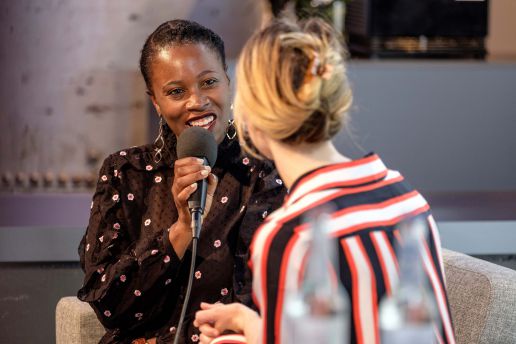
ABOUT THE AUTHOR
Founding editor-in-chief of FashNerd.com, Muchaneta has worked in the fashion industry for over 14 years. She is currently one of the leading influencers speaking and writing about the merger of fashion with technology and wearable technology.
Muchaneta Kapfunde | editor@fashnerd.com
Towards 3D Digital Innovation
3D Digital Innovation: Transitioning From Physical to Digital
AN INDUSTRY INSIGHT BY FASHNERD FOUNDER MUCHANETA KAPFUNDE.
As business practices in various sectors adjust to accommodate digital innovation, the textile industry has also started to shift direction. Driven by the growing need to rethink the industry’s approach to design, development and manufacturing, the textile business has finally started to turn to digital technology to help solve some of its industry-specific difficulties and complexities.
Under pressure to innovate, I am excited to witness 3D digitalisation finally taking centre stage in the textile industry. Propelled forward by the brand-new digital wave, textile businesses are setting new standards to future-proof the sector. Rethinking how they operate, more and more textile businesses are becoming less afraid to explore the benefits of transitioning from physical to digital. The majority are doing this by examining the advantages of merging textiles with digital experimentation. So, what exactly is 3D digital technology offering an industry notorious for being resistant to change?
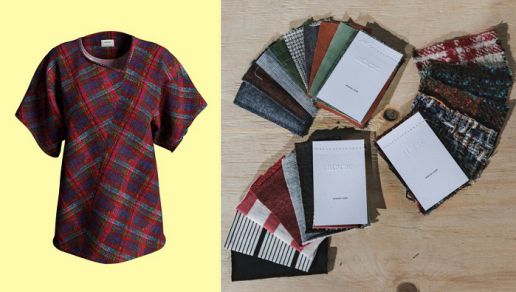
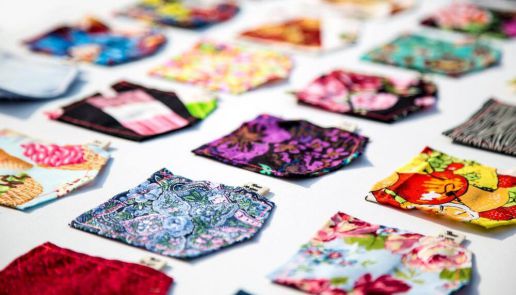
The Digitisation of Fabrics, A Powerful Asset?
Modern technologies are proving to be an influential asset when it comes to playing an integral part in changing the dynamics of the textile industry. With the potential to give textile businesses a competitive edge, we are starting to see 3D digital innovations being highlighted at textile trade shows, which, in my opinion, is a step in the right direction.
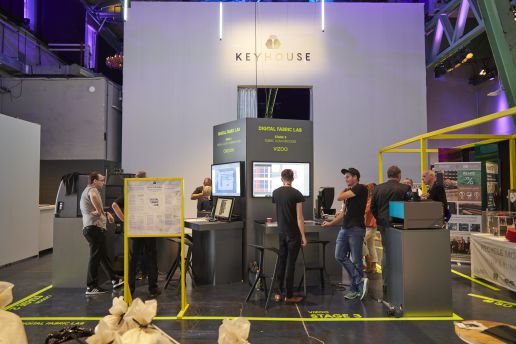
This is an opinion formed while frequenting various textile trade shows. As a regular visitor I am familiar with physical swatches. Now imagine if I, as a visitor (or customer), could access the digital twin of a piece of fabric along with its physical swatches. This concept was introduced at Munich Fabric Start (MFS) trade show during their 2019 edition of KEYHOUSE.
The Munich based trade show showcased fabric suppliers offering a digital twin alongside physical swatches. Partnering up with Digital Fabric Lab, they demonstrated the individual steps of fabric digitisation and how textile businesses can create a realistic image of digital fabric samples. The key takeaway was that physical no longer needs to be the master copy. More recently, in 2021, MFS invited attendees to indulge in 3D digital fabrics and trend inspirations showcased at their DIGITAL TREND SPACE.
PHYSICAL NO LONGER NEEDS TO BE THE MASTER COPY
Another digital platform making it possible to digitise fabric is Esmetex. “We aim to simplify the fabric development process; no more looking through swatch boxes and shipping swatches back and forth“, said the founder of Esmetex, Victor Chao, to Apparelresources.com. Adding:
“It is not practical for a designer to search through 18,000 fabric swatches when Frontier® can search based on whatever criteria the user is interested in and return all relevant fabric information on one page. This can be done on a desktop, laptop, tablet or smartphone by accessing our website or by installing our app.”
Chao is not alone in trying to help the textile industry move with the times. Emily Croneberger, manager marketing and industry programs, Cotton Inc, said in an interview:
“Digitising the fabrics is our first step in keeping cotton in a digital landscape”. She continued: “We have committed to creating an online digital library of our fabrics, free for download and use by brands, mills and accounts. We plan to move forward in promoting and expanding our digital assets.”
Although it is unlikely that physical samples will become a thing of the past anytime soon, the digital twin of fabric offers some advantages, like storing all fabric data in one central place. It is also worth taking note that solutions offered by digital material platforms like Swatchbook, also make it easier to verify the physical textiles’ authentication. For those attending shows, this type of tech solution makes viewing the fabrics more effortless while helping textile businesses be less wasteful when it comes to physical material samples and swatches.
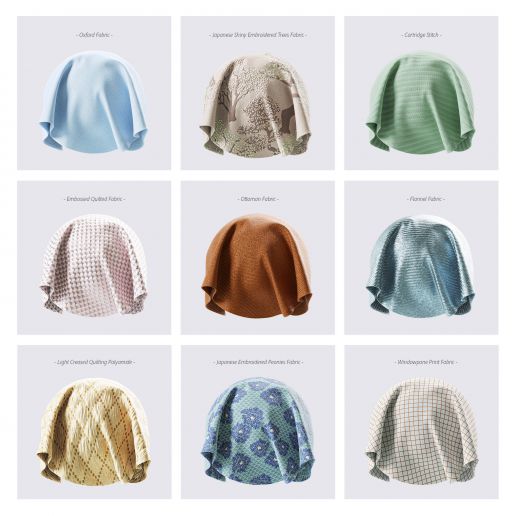
The Wonder Of Digitally Transformed Fabric
As industries transform to meet global changes, we have seen a rise in the adoption of newly emerging technologies. It is these genius ideas that have allowed the textile industry to take material digitisation to the next level. By hybridising the physical world with the digital one, textile companies that once relied on physical meetings at trade shows are now turning to innovative textile technologies to help them digitally transform their fabric during the global pandemic. One of these solutions is Scanatic™ Nuno Fabric Scanner provided by tg3ds.
Digitally powering the textile industry, the tg3ds studio uses an intelligent imagery processing engine to capture 3D texture display properties of fabrics in the smallest digital footprints. Another solution provider is Twinbru. They have made a name for themselves by setting an industry standard when it comes to making it possible for digital fabrics to be used in all virtual settings, like AR, VR and even game design.
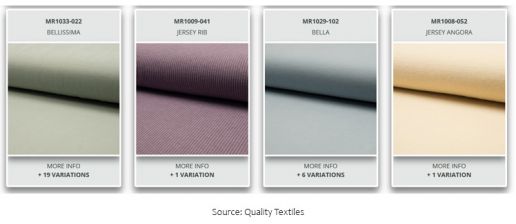
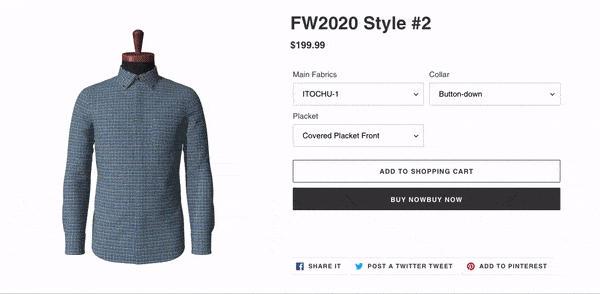
Ready for Limitless Possibilities?
When the world of “all things digital” merges with one of the oldest industries, you know it’s time to stand up and take notice. If you are a fabric mill, a garment manufacturer, or a textile brand, now is the time to leave outdated methods behind and transition your product from physical to digital. For example with help from companies like CLO Virtual Fashion, who can accurately emulate drape-sensitive fabrics such as lightweight wovens and jerseys with various material properties, more on this here. Yes, there are still imperfect kinks to the technology, like not being able to mimic complex behaviour of materials, but that does not make innovations like 3D Digital plan B; it should always be ‘the plan’.
So why embrace digital transformation? If you want to become faster, more relevant and more cost-efficient, now is the time to capitalise on all the possibilities that digitalisation offers. Yes, some might argue that the technology is not industry-ready enough to replace physical samples with virtual ones, but we can all agree that a new textiles economy is arising, and it makes sense to be a part of it.

ABOUT THE AUTHOR
Founding editor-in-chief of FashNerd.com, Muchaneta has worked in the fashion industry for over 14 years. She is currently one of the leading influencers speaking and writing about the merger of fashion with technology and wearable technology.
Muchaneta Kapfunde | editor@fashnerd.com
Taking Steps towards Digitisation
Digitisation is more important than ever. Accelerated by the global pandemic, partnerships and workflows between suppliers and fashion brands have become increasingly more digital. Fabric mills focusing on digitisation will not only cater to a brand’s digital product creation but also greatly increase customer service, reduce costs and reduce resources.
In most cases, fashion brands would digitise their fabric swatches in-house, with the swatch ordered and shipped this is a process which can take as long as 4 weeks. To optimise this process, there is a greater push to move the digitisation of fabrics from brands to the suppliers. With this shift, designers can immediately begin their design process, allowing them to move up their ordering schedule for the collections accordingly.
In a move which we hope will encourage and support our exhibiting manufacturers in the potential advantages of fabric digitisation, we have digitised and showcased a selection of new material developments in the WE ARE ALL IN Digital Trend Space for the new Spring.Summer 22 season.
We first introduced the concept that fabric suppliers will offer a digital twin alongside physical swatches at our 2019 edition of Keyhouse. After successfully demonstrating the individual steps of fabric digitisation in the Digital Fabric Lab, we have now succeeded in creating a realistic image of digital fabric samples in cooperation with individual partners from this network.
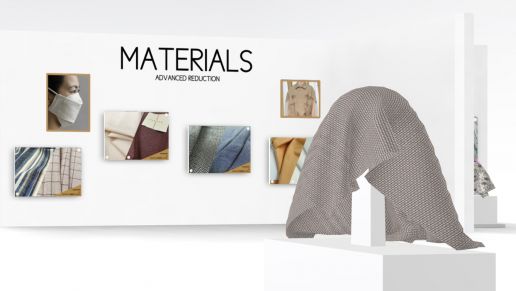

We are acting on behalf of the industry to enter the next phase of digitisation and communicate the advantages to proactively adopt 3D technology. Thanks to Triple Tree software developers, Vizoo, material visualisation specialists and Caddon as our experts in multispectral colour communication, we could visualize selected fabrics from our exhibitors as digital samples in our Trend Space.
We are planning further exciting projects with our partners in the near future. For now, we invite you to discover the 3D digital fabrics and trend inspirations showcased in our DIGITAL TREND SPACE.
How IoT is Making A Sustainable Impact on Retail
Could IoT Be The Technology Solution That Drives More Fashion Businesses To Adopt A Circular Business Model?
ARTICLE BY MUCHANETA KAPFUNDE, FOUNDING EDITOR-IN-CHIEF FASHNERD.COM
Did you know that IoT, Internet of Things, is all around us? With more connected things than people globally, we live in an IoT-enabled world that has the potential to power, a circular future for fashion and retail businesses. Destined to make a quantifiable impact, the Internet of Things has been busy proving itself to be beyond the hype.
Described by experts as a service innovation tool, IoT has been touted as the solution that will help fashion businesses change how they operate when consuming resources and waste production. Designed to make businesses smarter and more responsive, retailers adopting IoT are not only managing to transform their entire value chain; but they are also reducing the impact their business has on the environment. How might you ask? Allow me to elaborate.
Harnessing the Power of IoT
Responsible for automating the world around us, IoT has been described as merging the digital and physical universes. No longer restricted to wearable devices, intelligent cars or smart homes, IoT is a technology solution that offers fashion retailers’ the opportunity to interact and connect with customers, manufacturers and other businesses.
As a solution that presents retailers with the opportunity to reduce their environmental impact, IoT has become vital in supporting the industry to push forward sustainable measures. Sustainably innovating the retail sector and moving fashion towards a new and exciting direction are game-changers, one of them is Eon. The NY based startup, which partnered with Microsoft last year, has developed an IoT software that connects and stores digital identities of connected apparel.
It is no secret that retailers are more adaptors of innovation than innovators themselves. This is why Eon’s IoT platform continues to play a more vital role in everyday business. Redefining fashion and helping the industry scale new circular business models such as rental, resale, digital wardrobing, peer-to-peer exchange, styling services, reuse and recycling, Eon plans to bring a connected and circular economy across fashion to the forefront, which is why in 2020, alongside Microsoft they pledged to have 400 million fashion products online by 2025.
In an interview at Munich Fabric Start’s Keyhouse, in September 2019, I sit down with CEO and found of Eon Group, Natascha Frank. Watch the interview here.
IoT, Playing a Pivotal Role in a New Retailing World
IoT is helping fashion businesses have it all; commercial growth and a strategic system that allows them to keep their environmental commitments. Through IoT sensors and IoT-enabled data analytics, unique opportunities are not only being brought to the forefront; they are also delivering change. Playing a pivotal role in a new retailing world, IoT solutions are positively impacting the fashion industry because they have created conditions that are instrumental in encouraging retailers to increase their sustainability initiatives. Introducing a new awareness, IoT is helping deliver sustainability breakthroughs that include reducing energy use and carbon footprint, optimizing supply chains, sourcing responsibly and minimizing waste.
So it should not come as a surprise that the World Economic Forum estimates that 84% of IoT systems in use have the potential to meet the United Nations Sustainable Development Goals. Even with the scepticism still being received, IoT is still considered to be one of the largest enablers pushing forward the rise of Internet-enabled retail. Not only has it been improving efficiency and transparency, but IoT’s impact has also helped create conditions that allow for specific shifts to happen in retail. With continuous noise coming from the IoT space it is not without its challenges. Read more on this here.
One of the setbacks arising from this nascent trend is the issue of security and privacy. It is a problem that is slowing down the benefits that the IoT revolution can add to the industry’s sustainability initiatives. With most retailers admitting to not being technology experts, it is this lack of IoT know-how when it comes to security and privacy problems that is hindering the widespread adoption of the solution. IoT brings to the table a different set of privacy issues, separate from the ones we already face with ‘regular’ internet. So what is needed is a realistic approach to privacy and security, that came put in place sooner rather than later.
Closing the Gap Between ‘Wanting to be Innovative’ and ‘Being Innovative’
Although not everyone expects IoT to become a universal tool, it does not take away from its tremendous potential to make a pervasive impact on fashion retailers’ sustainability goals. Still considered a relatively young complex technology, IoT has, with time, become a valued digital technology respected for its ability to offer retailers a unique opportunity to tackle some of the most pressing issues like running a greener fashion business.
Accelerated by COVID-19, the gap between ‘wanting to be innovative’ and ‘being innovative’ is growing smaller. It is a change that has come about, mainly due to more retailers starting to invest in IoT for sustainable purposes. As IoT technology goes through continuous improvement, retailers need to be open to playing the long game because I believe that when it comes to the merger of IoT, sustainability and retail, we haven’t seen anything yet.

ABOUT THE AUTHOR
Founding editor-in-chief of FashNerd.com, Muchaneta has worked in the fashion industry for over 14 years. She is currently one of the leading influencers speaking and writing about the merger of fashion with technology and wearable technology.
Muchaneta Kapfunde | editor@fashnerd.com
Why It's Time For A Digital Intervention
Why It's Time For A Digital Intervention
ARTICLE BY MUCHANETA KAPFUNDE, FOUNDING EDITOR-IN-CHIEF FASHNERD.COM
In an increasingly digitised world, the present-day landscape for fashion businesses is changing. The technology tinkerers and digital blacksmiths are challenging the traditional way of designing. Digital activity is no longer just focused on sales; instead, there is a new digital approach transforming existing design practices. Reimagining the process of designing, creating and showing garments, digital tools are arming designers and brands with technology created to eliminate the manual steps usually taken in the traditional fashion design cycle.
A Digital Approach To Garment Creation
With optimism towards technology growing, more brands are becoming open to adopting new business models and beginning to find their footing in the digital economy. As we enter 2021, more fashion designers are starting to understand why digitally managing the back end of their business is essential which has meant that we are hearing less of “We know digital is important, but…”. Through digital intervention, fashion businesses are not only altering how they operate day-to-day, they are also taking a step back and thinking about how digital tools could add value to their business.
Moving towards a more digital model presents exciting opportunities, especially for fashion houses, grappling with how to move forward post-pandemic. Created to enhance what we want to achieve long term, committing to the digital process will not only eliminate multiple rounds of pattern-making and model fittings; it will also allow fashion brands to identify and unlock opportunities. Yes, going digital can come with a few uncertainties, but with everything going on, there has never been a more perfect moment to change your internal mindset.
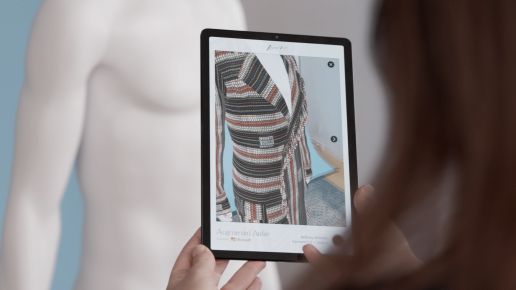
Be Inspired To Innovate and Push the Boundaries
Taking a visionary approach is founder of fashion magazine More or Less, Jaime Perlman. Last year the former Vogue UK creative director teamed up with Microsoft to launch ‘Augmented Atelier‘. The partnership was designed to advocate new tools for an alternative take on design. “It’s really about using technology as a form of imagination and how that reacts with the real world in a physical space. It’s about using technology to innovate and push the boundaries of what fashion can mean,” explained Jaime Perlman on the Microsoft.com blog.
Harnessing the capabilities of Microsoft Azure Spatial Anchors, Pearlman is not defying traditional methods independently; she has Bethany Williams, Phoebe English, Fredrik Tjærandsen, and Rottingdean Bazaar as part of her tribe. Working together, they have been busy bringing forward tools that offer the kind of solutions that bring sustainability, innovation and imagination to the forefront of the industry.
Defining Your Place In The Digital Economy
Streamlining the design process, pushing boundaries and reshaping attitudes, taking a digital approach to garment creation is not a radical choice but a necessary one. Although the digital journey can be challenging, more and more innovative tools are growing in prominence and being introduced to the industry. It is these tools that are giving fashion brands a better understanding of the opportunities that they present. Yes, digital technology is making it easier for fashion businesses to move towards a more digital model, but the question now is, are you, as a business, ready to embrace the change taking place in the industry?
With startup designers leading the way and defining their place in the digital economy, some still hesitate. If you are unsure if digital tools are the way forward, imagine this, having the ability to transfer real-life fabrics to your design. The good news is that you do not have to imagine anymore, thanks to The Scanatic™ Nuno3D Service. Digitally empowering fashion, the company offers a solution that allows for realistic fabric visualisation by rendering the fabric scan in the most true-to-life. It is an invention that enables designers to import different texture maps, like knitted fabrics, woven fabrics, synthetic fabrics etc.
Then there is CLO. Promising to revolutionise the design process by combating inefficiencies within the fashion industry, CLO is a software that can transform a brands workflow. With CLO, brands could bring their business presence to the next level. Offering true-to-life 3D garment simulation, CLO addresses today’s challenges by providing an efficient 3D design process. By guiding the fashion industry towards a future where designers can seamlessly integrate 3D into their operation, CLO makes it possible to virtualise a garment and transform a designer’s entire workflow.
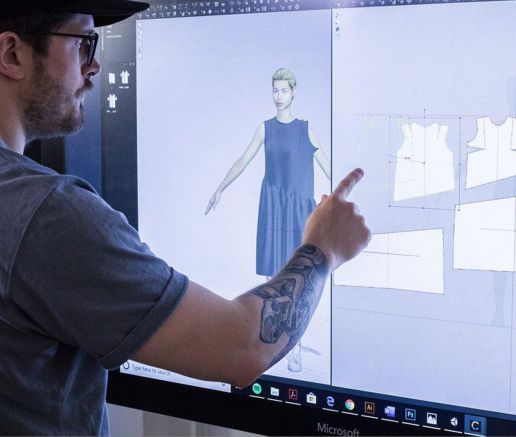
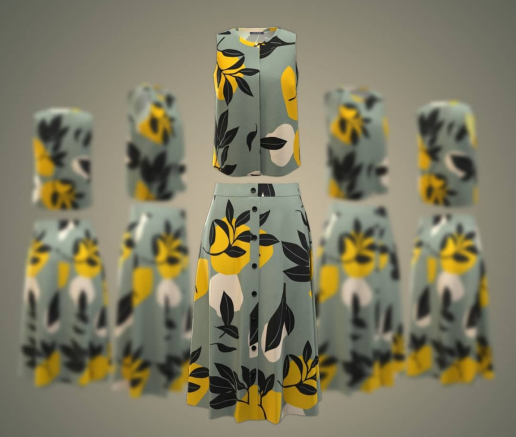
A firm favourite is TUKATECH. The software company has two digital fashion products, TUKAcad and TUKA3D. Created for designers looking to streamline their production process, the software eliminates the need for physical samples and makes it possible to create life-like digital collections. One of the critical features of TUKA3D is that it includes 3D virtual sampling in 5 visual ways, real-life virtual fit sessions and fabric and trims library.
Last but not least is Virtuality.Fashion. Driven to bring your fashion ideas to life, the company has made sharing creations virtually without sending physical samples easy breezy. Powered by C-Design, the collaborative platform makes sharing and collaborating with potential buyers or internally much more straightforward.
Digital Tools, The Ultimate Must-Have?
Presenting new opportunities for an industry that needs to change – digital tools are becoming the ultimate must-have for fashion businesses ready to transform existing design practices. More affordable than ever before, the good news is that the adoption of full-fledged digital solutions has gone from pleasant to have, to need to have. As we enter 2021, the fashion brands that are taking this positive step in the chaotic upside-down world we are currently doing business in are most likely going to be around for the long run, and for those who are reluctant to adopt digital tools, some experts predict that soon it will be too late.


